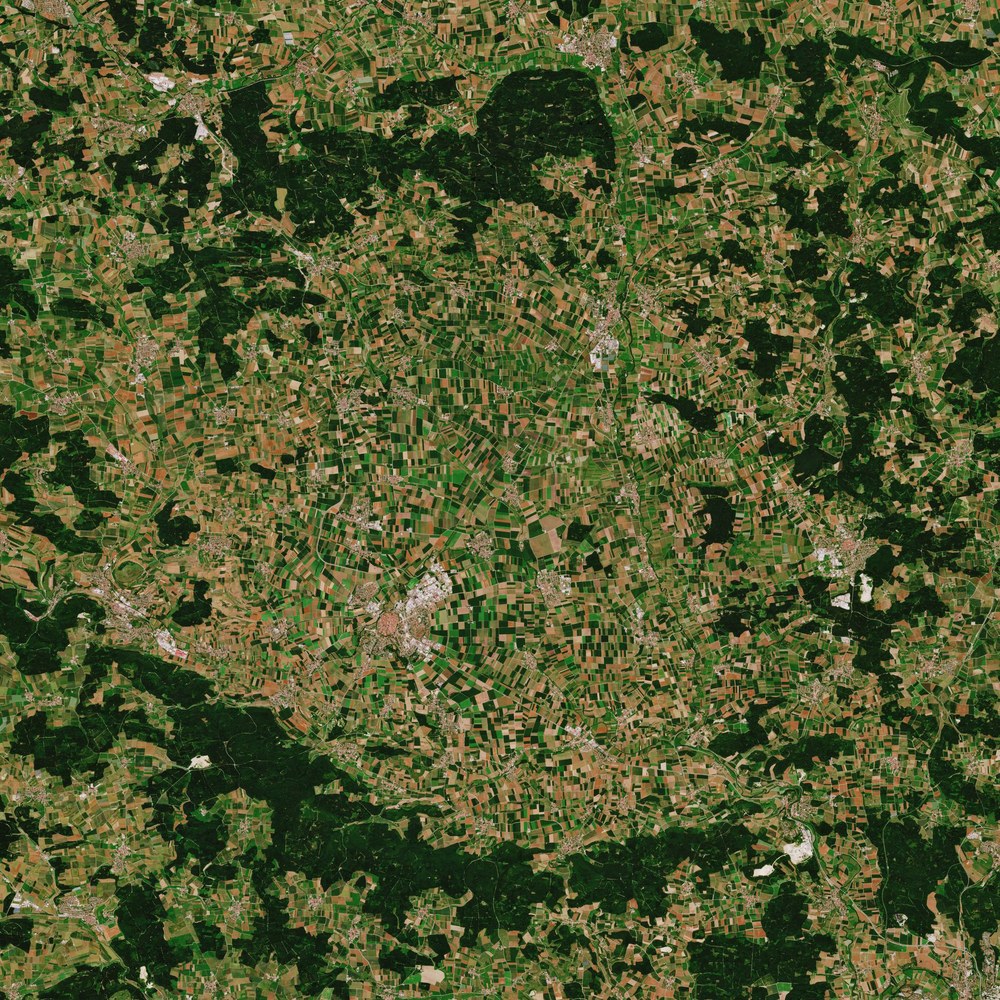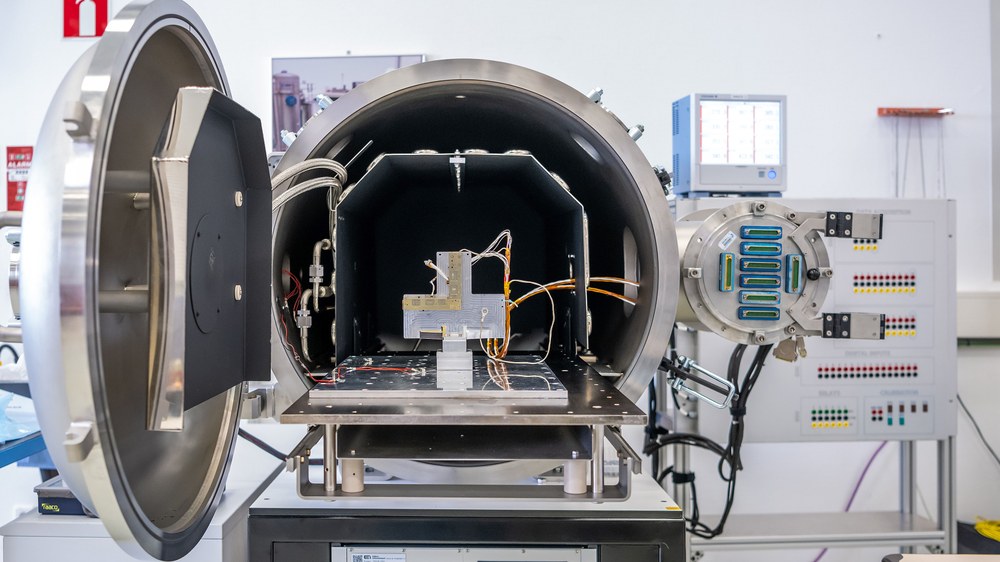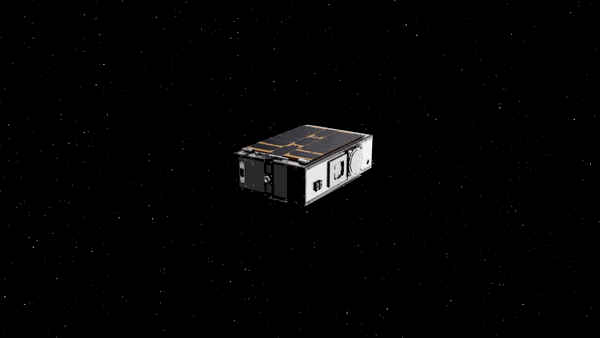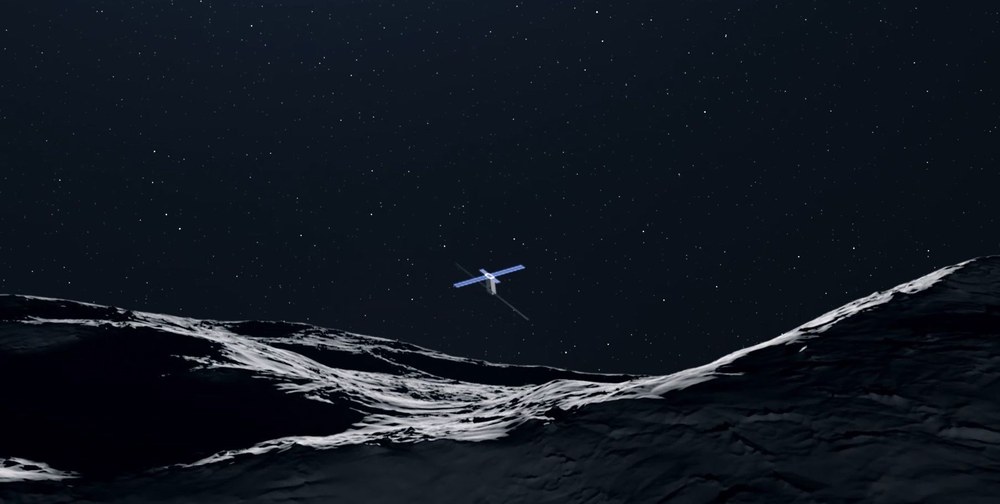Asteroid impact – the dinosaurs had no space programme

ESA/Science Office
Natural disasters are often dramatic, cause suffering to humans and nature, and cannot be prevented... or can they? Earthquakes, volcanic eruptions and tsunamis certainly cannot, but there is one exception – an asteroid impact with Earth.
Films like Armageddon vividly illustrate the potential scale of such a disaster. But how likely is it that our planet will be hit by a chunk of rock from space? On average, an asteroid measuring several kilometres in diameter strikes Earth once every 120,000 years. Overall, therefore, such a natural disaster is rare, but it can have global consequences.

contains modified Copernicus Sentinel data (2018), processed by ESA
So the question is not whether, but when, the next asteroid will hit Earth. The reality of this threat was brought home on 15 February 2013, when an asteroid 20 metres in diameter entered Earth’s atmosphere and burst at altitude near the Russian city of Chelyabinsk. Over 1000 people were injured, mainly by window glass shattered by the shock wave. Had the space rock been larger, the consequences would have been far more serious.
So do we have to live with this constant threat? Will we one day suffer the same fate as the dinosaurs? Fortunately not – unlike the dinosaurs, we have a space programme. And today, this programme is attempting to actively deflect an asteroid from its trajectory. As part of my doctoral thesis at the Royal Observatory of Belgium, I was fortunate to be able to contribute to this project together with the team from the Hera European asteroid mission.
Dimorphos pushed off course
But let's start at the beginning. As part of a European-US cooperation effort, the asteroid moon Dimorphos is to be investigated after being kinetically deflected from its natural orbit around a larger asteroid, Didymos. An asteroid moon is a smaller asteroid that orbits a larger one, just like the Moon orbits Earth. Kinetic deflection means that a space probe hits an asteroid at maximum speed and the momentum of the collision changes its trajectory. The first part of the experiment was successful. DART, a space probe sent by US space agency NASA, struck Dimorphos on 26 September 2022, shortening its orbital period of 11 hours and 55 minutes by a full 33 minutes. To fully understand the outcome of this experiment and draw conclusions for a possible future mission, the binary asteroid system must now be examined up close.

ESA/SJM Photography
That is exactly what the European Hera mission set out to do when it launched in October 2024 – study in detail the two asteroids and, of course, the artificially created impact crater. And this is where our contribution to the mission comes in. Space probes are equipped with a wide variety of instruments for the scientific investigation of celestial bodies. One of these instruments is GRASS (GRAvimeter for small Solar System bodies), which we were able to contribute to the mission as part of the Belgian Hera team’s participation.

ESA/Science Office
GRASS was not installed directly on the large Hera space probe, but rather on Juventas – one of two CubeSats that are also on board the mission. CubeSats are shoebox-sized sub-satellites that can complement space missions. Here, Juventas will be used to perform a risky manoeuvre in place of the main satellite Hera, landing on Dimorphos in the final phase of the mission to take gravitational measurements on the surface with GRASS. This will be an absolute first in asteroid exploration, and we hope the data from GRASS will provide us with information on the internal structure and composition of the asteroid.
Gravitational force on asteroids – where is down?
The first challenge was gravity. On the asteroid, gravity is about 200,000 times weaker than on Earth and is not constant across the entire surface, as asteroids are not usually spherical. We took sole responsibility for the mechanical development of the instrument – a completely new design for such low gravity. We also modelled the surface gravity of the asteroid.
There were two further special challenges for our new development. First, the space available for housing GRASS in the compact CubeSat was very limited. Second, the orientation of the instrument cannot be controlled after landing on the asteroid, and we do not know the direction of gravity on the surface. While gravity on Earth points almost perfectly ‘downwards’, this is not the case on a non-spherical asteroid.

ESA/Science Office
From the diving board to the GRASS gravimeter
The most reliable mechanical principle used in gravimeters is based on a spring. We measure the weight force acting on the spring directly by measuring its deformation. Since weight is the product of mass and gravity, we can determine gravity from the extension of the spring if the mass of the spring is known. However, a coil spring, like those we are familiar with from, say, ballpoint pens, was not an option. This is because coil springs require a relatively large amount of space and their deformation is one-dimensional (in the pen example, along the length of the refill). We solved this problem with two rotating cantilever springs.
A diving board in a swimming pool is comparable to such a spring. When an adult stands at the front edge, the board bends more than it does with a child because the adult exerts a greater gravitational force on this ‘spring’. On Earth, this would be our gravimeter. However, in order to measure the 3D gravitational vector on the asteroid, we rotate this spring along its long axis and combine two springs arranged at an angle of 90 degrees to each other.

ESA/EMXYS
The rotation and perpendicular arrangement ensure that there will be exactly one measuring point during the rotation of the springs where the maximum, or real, gravity is acting. This allows us to reconstruct the Dimorphos gravity vector in 3D, regardless of how the instrument lands and what the direction of local gravity is. A spring will deform under its own weight (even a diving board bends slightly when no one is standing on it) but given that this deflection would have been far too small, we attached a mass of tungsten – a very dense heavy metal – to the end of the spring (we would have preferred platinum, which has an even higher density, but even space projects have limited budgets!).
The mass is analogous to a person standing on the very front edge of a diving board, to maximise the deformation. But how is the local gravitational vector oriented on this particular asteroid, and what does this orientation tell us about its internal structure?
Simulations help prepare the measurements
The exact orientation of the gravitational vector cannot be predicted without the measurements taken by our instrument. However, we can make preliminary hypotheses to simulate the expected range of gravity. To do this, we have made assumptions about the shape and density of the asteroid and simulated the resulting surface gravity. Given a known volume (which will be measured by cameras), the density of the asteroid is directly proportional to its gravity. And if we can derive the density of the asteroid from its gravity, we can also make statements about the material it is made of. Is it more likely to be made of water ice or rock? Are there any voids?
By combining this information with data from the other Hera instruments, we hope to gain an even more detailed understanding of the interior of the asteroid. For example, the JuRa radar, in which the Technical University of Dresden is playing a key role, will enable us to detect cavities in the asteroid. Overall, theoretical simulations have not only supported the development of the instrument by modelling the (approximate) measurement range in advance, but have also prepared us for interpreting the data. With the Hera mission and our work, we want to contribute to a better understanding of how to deflect an asteroid. Hopefully this knowledge will never be needed in an emergency... but if it is, then we will be one step ahead of the dinosaurs.
Related links
Tags:
